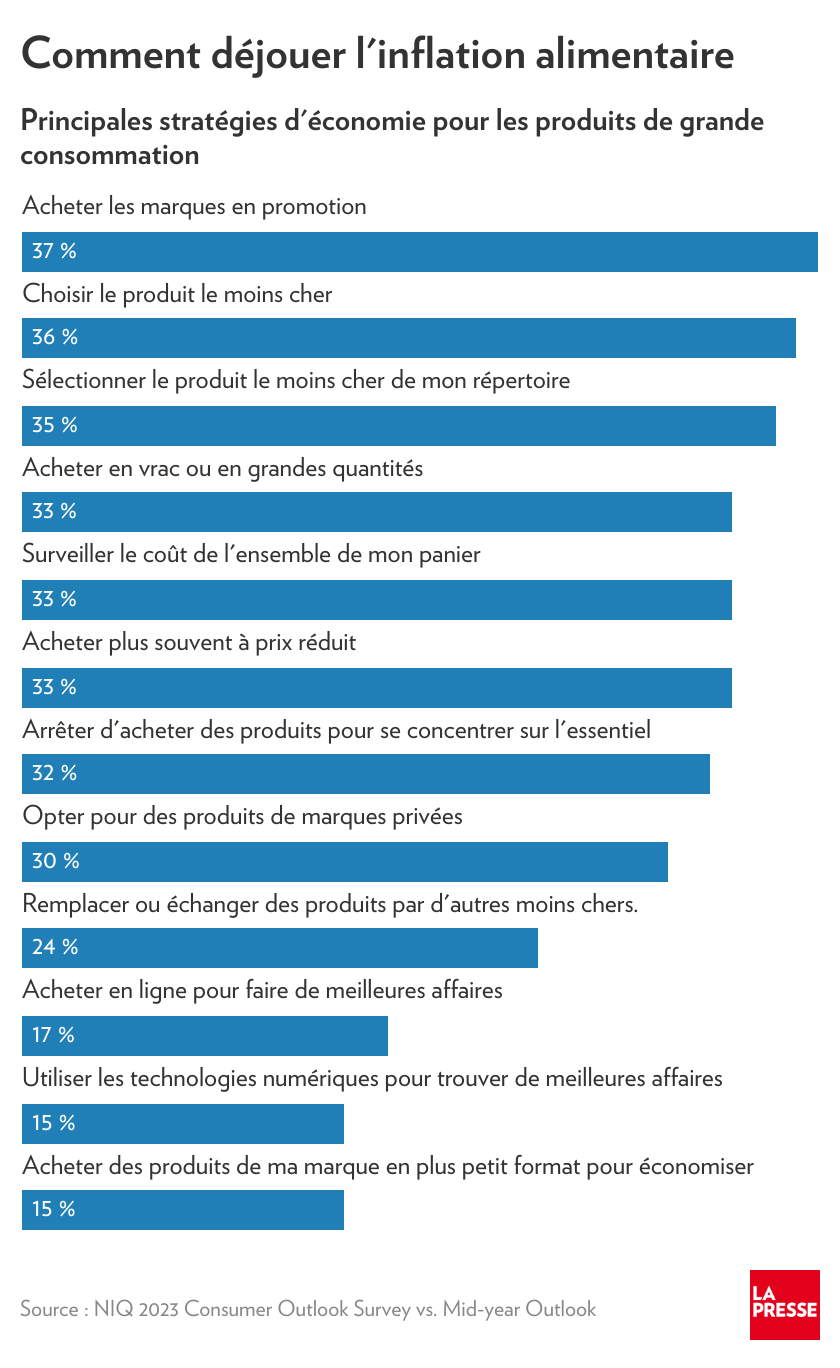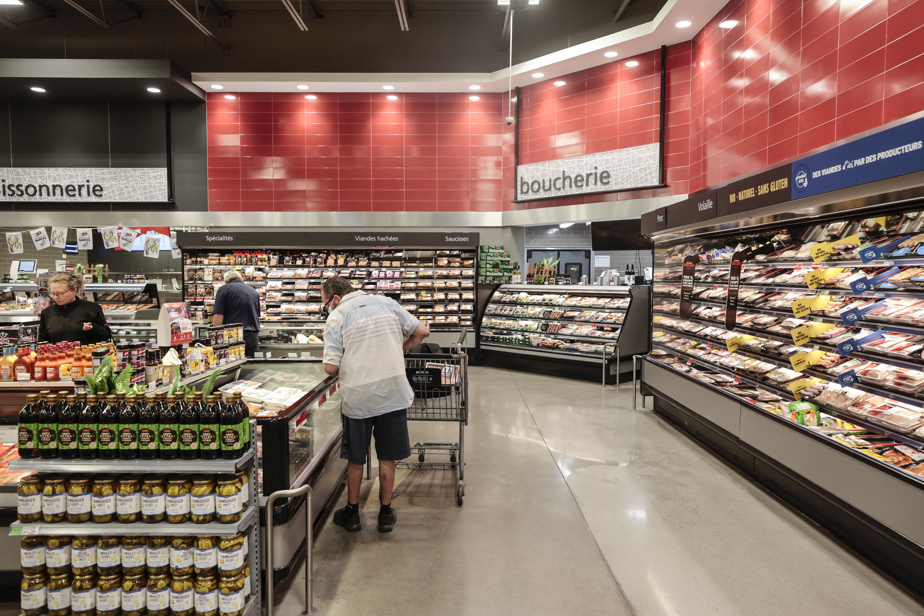The bosses of major food retailers were summoned to Ottawa on Monday to find strategies to curb the rise in grocery prices. However, it seems that Canadians have already adapted their behavior, since we are buying less, following a budget when shopping… and snacking more!
Despite a tighter budget, snack foods still find their place in grocery bags. The phenomenon is observed here as elsewhere. So much so that rather than analyzing meals eaten three times a day, we are increasingly talking about “eating occasions,” says Francis Parisien, senior vice-president, SME sales Canada, for Nielsen. In the United States, he cites as an example, certain observers of eating behavior no longer hesitate to deconstruct established habits to analyze snacks as part of the daily ritual.
Behind this data, surprising at first glance, Francis Parisien sees a more important signal: stress makes you snack. This observer recalls that at the start of the pandemic, part of the population gained weight. Especially because we ate differently and we snacked a lot.
Inflation, particularly that affecting food, concerns Canadians, even more than other populations, if we rely on surveys conducted by Nielsen in several international markets.

It is in Canada that consumers are most concerned about food inflation, even though some countries have seen the price of food and personal care products rise much more than here – 14% for France and 9% in the United States, for example. The increase for the comparable category is 7% in Canada.
Another fact can also explain why snacks, and often not the most nutritious ones, are popular at the moment: you have to treat yourself to pleasures, even in the market where the budget is compressed. According to Francis Parisien, the chocolate bar is still an affordable pleasure.
Less food
But these “pleasure purchases” do not change this other fact which stands out from behavior at the grocery store: consumers are reducing their purchases in quantity.
“We’ve never seen this,” says Francis Parisien, who has been following market trends for 24 years. And there is no transfer to anything else. »
The trend is global: “people are buying less food”.
“We are used to managing growth,” he says. However, the opposite is currently happening. And this decline in consumption is even more striking if we couple it with the growth of the Canadian population, insists Francis Parisien.
Regardless of the type of business, from the large warehouse store to the corner mom-and-pop store, there has been an increase in prices in virtually every category of food and, conversely, a decrease in the quantity purchased.
This summer, the “average household” in the country spent nearly $1,900 on groceries and consumer products purchased while shopping, such as beauty and health products. Obviously, the bill varies depending on the size of the household.
The average spent per store visit remained stable, as did the number of visits to stores. “Except that in April, we put 10 items in the basket, now, we put fewer, for the same price,” explains Francis Parisien.
This data calculates expenses made for 12 weeks, from the end of May to mid-August 2023.
Last week, Francis Parisien presented his mid-year report to the members of the Food Processing Council of Quebec. His presentation raised many questions, particularly about this drop in consumption.
“We are really scratching our heads to understand how it is that consumers are buying less,” admits Sylvie Cloutier, president of the Council. She makes certain assumptions. “Is it because people have gotten back into the habit of going to restaurants? Is it because they consume more meal boxes, those famous boxes that we receive for the week? Do people still have stockpiles of canned goods or dry goods during the pandemic? »
Sylvie Cloutier does not hesitate to describe this situation as mysterious, and raises the paradox that travel is on the rise. “We are really dismayed by this data,” she said.

Less waste
There are multiple hypotheses to explain this decline.
Certainly, the fight against food waste explains part of the decline, argues Francis Parisien, because consumers who spend a lot on their food do not want to throw it in the trash.
We would therefore plan more and better. “There is a question of efficiency and better planning,” confirms Francis Parisien.
Another fact to note: consumers are making and following budgets more than ever. According to Nielsen data, 43% of Canadians stick to a budget and limit their spending.
“I have never seen that,” repeats Francis Parisien, who adds that this figure usually fluctuates around 20% of consumers.
And to make ends meet, consumers are looking for good deals.
One way to achieve this is to purchase house brands, which are very popular, despite a slowdown in sales in the summer. More than half of consumers view them favorably, considering that they provide good value for money.
Another way to reduce the bill: favor discount grocery stores.
This summer, these chains saw their customer base increase by 2%. For dollar stores, an increase of 9% was noted for this period of the last 12 weeks, according to Nielsen observations. Conversely, the same analyzes note a decline in visits to the pharmacy (-4%), the health food store (-13%) and traditional general supermarkets (-6%).
Regardless of the strategy, consumers are in on the action. According to Francis Parisien, certain behavioral changes should be expected to last, since they are effective and now integrated into the routine.
What products are we buying less of?
Cold meats: – 10%
Alcoholic drinks: – 5% Cosmetics: – 5% Desserts: – 4% Hair care: – 3%
The end of the circular
Flyers are still an important source of information for consumers looking for deals – almost six out of ten Canadians consult them in full, whether in a virtual or paper version.
Nielsen plans to do a new study in the Montreal market this fall to see what the effect of the disappearance of Publisac was last spring.
But for some, the effect was immediate.
“I understand this decision for the environmental aspect, but for citizens, it is complicated,” says Benoist de Peyrelongue, general director of the Collective Kitchen of Hochelaga-Maisonneuve, who has been particularly busy since the surge in food prices.
“The people who received the bag and who don’t have access to the internet no longer have the specials,” he said. So they lose their bearings. »
For some cooking workshop participants, who are learning to stick to a budget for meal preparation and planning, flyers are an educational tool. “There is a significant percentage of these people who do not have internet at home,” says Benoist de Peyrelongue.
Calling all
Have you changed your eating habits because of food prices? How ? Are you satisfied with the results?
Learn more
-
- 45%
- Almost half of Canadian consumers, or 45%, have changed the way they shop to save money, and a third say they now only buy the essentials.
Source: Nielsen
- 52%
- One in two Canadians (52%) are concerned about rising food prices. Rising utility costs and transportation costs come in second and third as budget concerns, but only 15% of respondents care.
Source: Nielsen
-
- 52%
- Half of Canadian consumers (52%) consult the digital version of flyers to make comparisons on the prices of consumer products.
Source: Nielsen
